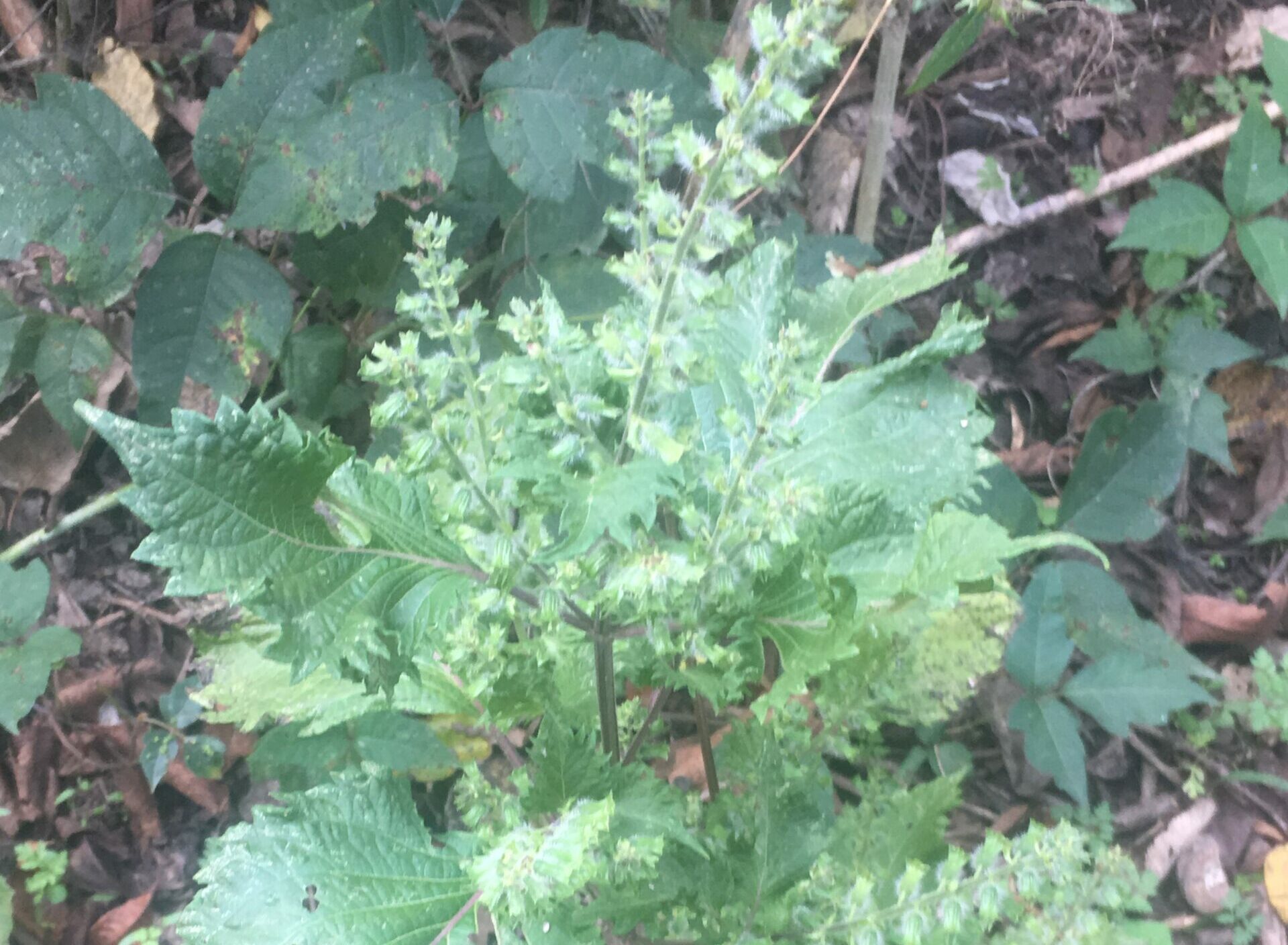Perilla mint poisoning of livestock worsens during drought

COLUMBIA, Mo. — University of Missouri Extension specialists are getting reports of illness and death in cows and small ruminants that may have ingested perilla mint.
Perilla mint, a toxic summer annual, is also known as rattlesnake weed, purple mint and beefsteak plant.
Most healthy animals will eat around perilla mint if other more palatable feed is available, says University of Missouri Extension veterinary toxicologist Tim Evans. But when pastures are thin and overgrazed, hungry cows and ruminants will eat what they can.
MU Extension livestock specialist Elizabeth Picking in south-central Missouri says she saw suspected perilla mint poisoning of young doe goats in her area recently. Specialists in southwestern Missouri also have received unconfirmed reports of cattle poisoning.
Picking says that, in her experience, poisoning appears more prevalent in younger animals that have not had time to learn safe grazing behaviors from their mothers.
The best time to control perilla mint with broadleaf herbicides is before seed heads develop, says MU Extension weed scientist Kevin Bradley.
In a press release, Bradley said, “But, overall, the plant is fairly easy to control with some common prepackaged pasture herbicide mixtures like Grazon P+D, GrazonNext, WeedMaster or other generic products that contain the active ingredients 2,4-D, dicamba, picloram or aminopyralid.”
Even 2,4-D alone at one quart per acre will provide good control of perilla mint, Bradley says. He notes that plants that have seed heads present at the time of herbicide application can still be controlled, but the control will likely be reduced. It may be too late to prevent seed production from occurring by that time.
Perilla mint grows 2-4 feet tall in shaded, damp areas, often massed along fence rows and the edges of woods. Perilla mint has a purplish tint, and the stems are square. Its serrated leaves grow opposite one another, and it smells minty.
Every part of the plant is poisonous. It is reported to be most toxic when flowering and potentially remains toxic even after it is killed by herbicides or dried in hay.
Unless complicated by pre-existing diseases, mild to moderate breathing difficulty occurs several days before the onset of more serious signs. Symptoms may improve when animals are removed from infected pastures or given treatments recommended by their local veterinarian.
Signs of acute respiratory distress caused by perilla mint poisoning include sudden, severe shallow panting, says Evans.
Animals may try to breathe with their mouths open and head and neck extended as they try to get more air. They may stick their tongues out and their mouths may foam. Take care when approaching affected livestock, as these animals may become aggressive, and they can die if stressed too much, says Evans.
Animals other than cows may be susceptible to perilla mint poisoning, but most cases seen by Evans involve cattle. Evans says a compound in the plant called perilla ketone is converted in the animal’s respiratory tract into an even more toxic compound that damages the lungs.
Evans suggests that producers with dead livestock ask a veterinarian to perform a necropsy, a postmortem procedure. The necropsy can be performed in the field, at a veterinary clinic or at a veterinary diagnostic laboratory.
The veterinarian or pathologist will open the animal’s chest and abdominal cavities to examine its lungs, other organs and rumen contents. They may also collect samples for further testing and examination.
“With all of the potential drought-related causes of death, it is important that postmortem exams and testing be performed to determine the actual cause of death,” Evans says.
Find pictures of perilla mint and more information on the MU Extension Weed ID guide at https://weedid.missouri.edu/weedinfo.cfm?weed_id=229. You can also watch an MU Integrated Pest Management video about perilla mint at https://youtu.be/btegNdDqBfA.
Miss Clipping Out Stories to Save for Later?
Click the Purchase Story button below to order a print of this story. We will print it for you on matte photo paper to keep forever.

